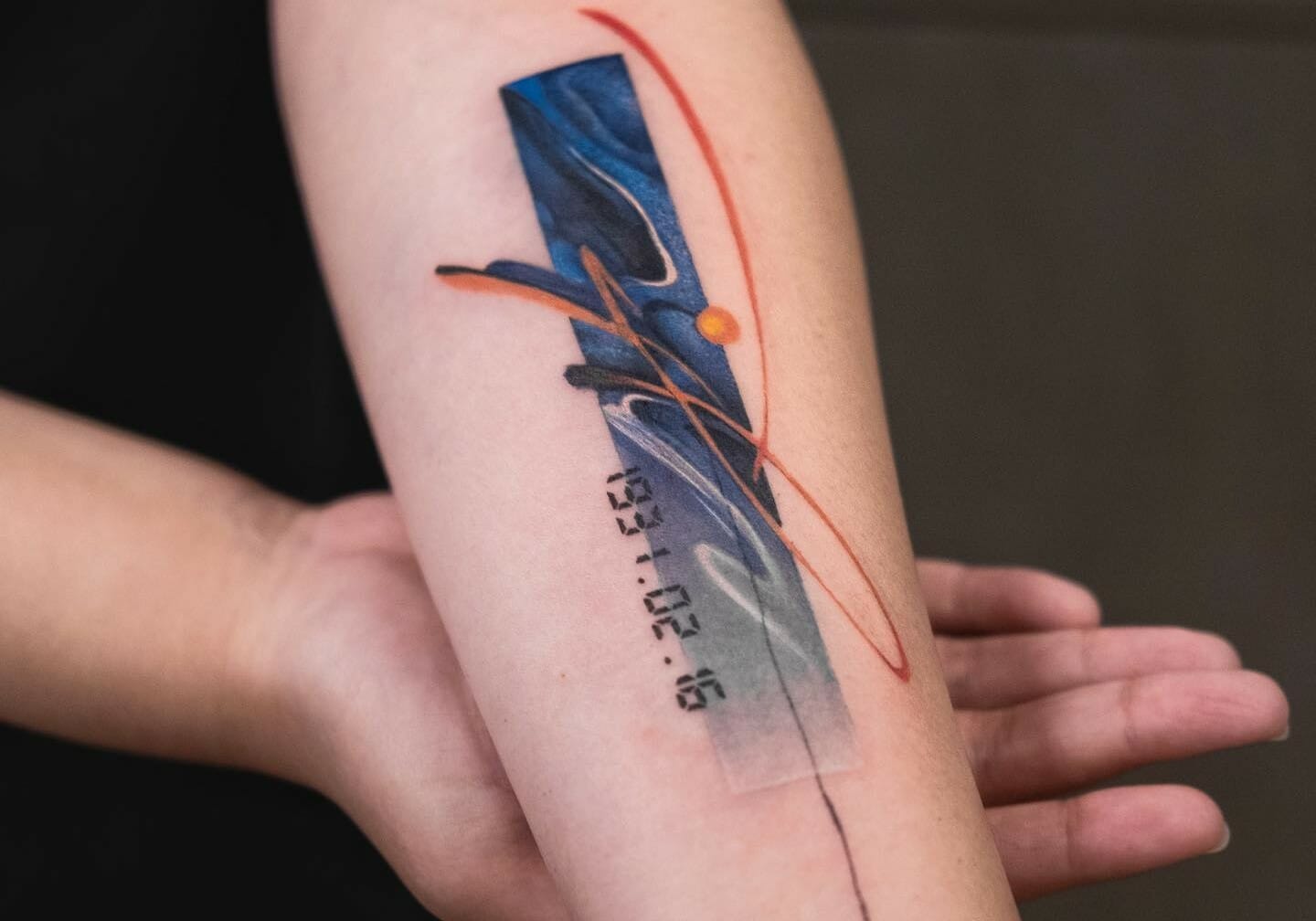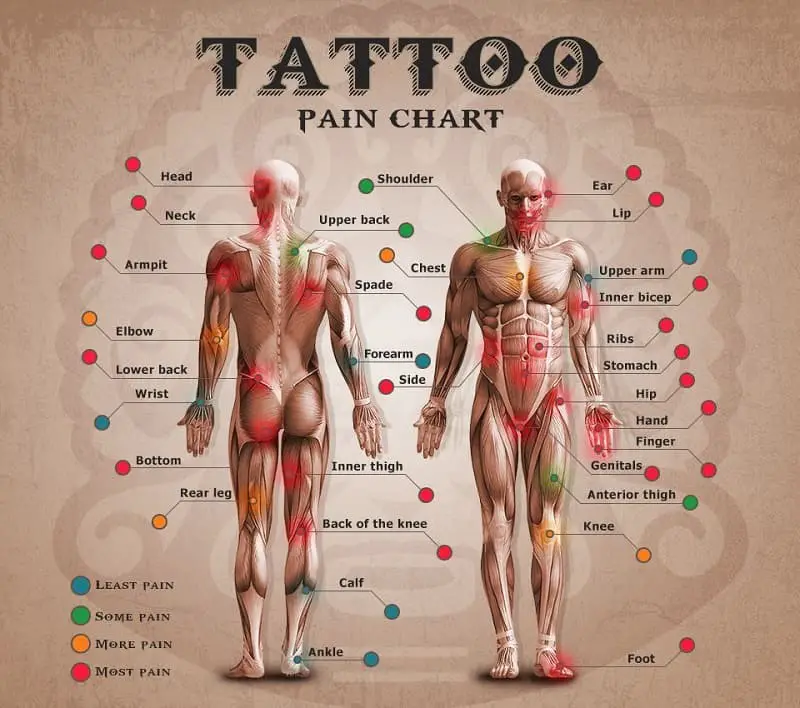
Can a Minimalist Tattoo Incorporate Shading Techniques? A Deep Dive into Subtle Art
Minimalist tattoos have exploded in popularity, capturing hearts with their clean lines, simple shapes, and profound meanings often conveyed through understated elegance. But what happens when you want to add a little oomph? Can you introduce shading techniques without sacrificing the essence of minimalism? The short answer is a resounding yes! But let’s unravel the intricacies of how shading and minimalism can beautifully coexist on your skin.
The Allure of Minimalism: Less is Truly More
Before diving into shading, it’s crucial to understand what makes a minimalist tattoo, well, minimalist. Think of it as the Marie Kondo of body art. It’s about stripping away the excess and focusing on the essential elements. Common characteristics include:
- Clean, crisp lines: Precision is key. These aren’t messy sketches; they’re deliberate and defined.
- Simple shapes and imagery: Think geometric forms, single flowers, or abstract symbols. Complex landscapes are generally a no-go.
- Limited color palettes (often black ink only): The focus is on form and line work, not vibrant hues.
- Negative space as a design element: The skin itself becomes part of the artwork, creating visual interest.
- Subtle and often small scale: Minimalist tattoos are often placed on discreet areas, adding to their understated charm.
This focus on simplicity is what gives minimalist tattoos their timeless appeal. They’re elegant, versatile, and often carry deeply personal meanings without shouting from the rooftops.
Shading: Adding Depth and Dimension to Simplicity
Shading, on the other hand, introduces depth, texture, and dimension to a tattoo. It’s the artist’s way of manipulating light and shadow to create a more realistic or visually interesting effect. Different shading techniques can achieve vastly different results:
- Stippling: Creating gradients and shadows with tiny dots. This is a fantastic option for a subtle, almost ethereal effect.
- Whip Shading: Achieved by quickly "whipping" the needle across the skin, creating a textured, airy look.
- Grey Wash: Diluting black ink with water to create varying shades of grey. This allows for smooth transitions and realistic shading.
- Solid Shading: Filling in areas with solid blocks of color (often black or grey). This can create bold contrast and define shapes.
The Marriage of Minimalism and Shading: A Delicate Dance
The key to successfully incorporating shading into a minimalist tattoo lies in restraint. Overdoing it can quickly transform a sleek design into something cluttered and overwhelming. Think of it as adding a pinch of salt to a dish – just enough to enhance the flavor, not overpower it.
Here’s how shading can elevate a minimalist tattoo without sacrificing its core principles:
1. Subtle Stippling for Gentle Dimension
Imagine a minimalist outline of a crescent moon. Instead of simply being a flat shape, subtle stippling can be added to one side, creating the illusion of depth and curvature. The dots are so fine that they almost blend into the skin, adding a touch of realism without compromising the clean lines.
2. Light Whip Shading for Texture and Movement
A single, minimalist rose outline can be brought to life with light whip shading along the petals. This creates a sense of texture and movement, suggesting the delicate folds and curves of the flower. The shading is airy and light, preserving the overall simplicity of the design.
3. Strategic Grey Wash for Subtle Definition
Consider a minimalist mountain range tattoo. Using grey wash shading to subtly define the peaks and valleys can add a sense of depth and perspective. The shading is soft and gradual, creating a realistic effect without overwhelming the minimalist aesthetic.
4. Minimalist Solid Shading for Bold Accents
Even solid shading can find a place in minimalist design. Think of a simple geometric shape, like a triangle. Filling in just a small portion of the triangle with solid black ink can create a bold accent that draws the eye and adds visual interest.
Finding the Right Artist: A Crucial Step
The success of a minimalist tattoo with shading hinges on finding an artist who understands both techniques intimately. Look for an artist who:
- Has a portfolio showcasing minimalist designs: This demonstrates their understanding of clean lines, simple shapes, and negative space.
- Has experience with shading techniques: Look for examples of stippling, whip shading, or grey wash in their work.
- Is willing to collaborate and offer suggestions: A good artist will be able to guide you on the best way to incorporate shading into your design while maintaining its minimalist aesthetic.
- Understands the importance of subtlety: They should be able to execute shading techniques with a light hand, avoiding over-saturation or excessive detail.
Don’t be afraid to ask questions and discuss your vision in detail. A good artist will be happy to work with you to create a tattoo that perfectly reflects your style.
Examples of Minimalist Tattoos Enhanced with Shading:
- A tiny hummingbird outline with subtle stippling on its wings: This adds a sense of movement and delicacy.
- A minimalist compass with light whip shading around the cardinal directions: This creates a vintage, weathered effect.
- A simple geometric shape with strategic grey wash shading to create a 3D illusion: This adds depth and visual interest.
- A minimalist tree silhouette with solid shading on the trunk to ground the design: This creates a bold contrast and adds stability.
- A single, minimalist wave with subtle stippling to suggest the texture of water: This captures the essence of the ocean in a simple and elegant way.
Considerations Before Getting Inked:
- Placement: Consider where you want your tattoo placed. Smaller, more discreet areas may be better suited for minimalist designs with subtle shading.
- Longevity: Keep in mind that shading, especially lighter shades, may fade over time. Discuss maintenance options with your artist.
- Skin Tone: Lighter skin tones tend to show shading more clearly. If you have darker skin, your artist may need to adjust the shading technique accordingly.
- Healing Process: Shaded tattoos may require slightly more aftercare than simple line work. Follow your artist’s instructions carefully to ensure proper healing.
The Future of Minimalist Tattoos: A Blend of Simplicity and Sophistication
As tattoo trends continue to evolve, we can expect to see even more innovative ways to incorporate shading into minimalist designs. Artists are constantly pushing the boundaries of what’s possible, creating tattoos that are both elegant and visually stunning. The marriage of minimalism and shading offers a unique opportunity to express yourself through subtle art, creating a tattoo that is both meaningful and beautiful.
In conclusion, minimalist tattoos can absolutely incorporate shading techniques! The key is to approach it with a sense of restraint and collaboration with a skilled artist. By carefully selecting the right shading technique and placement, you can elevate your minimalist tattoo to a whole new level of artistry, adding depth, dimension, and visual interest without sacrificing its core principles. So, embrace the subtle art and let your minimalist tattoo shine!
FAQs:
1. Will shading make my minimalist tattoo look cluttered?
Not if it’s done correctly! The key is to use shading sparingly and strategically. Choose subtle techniques like stippling or light whip shading, and work with an artist who understands the importance of restraint.
2. What’s the best shading technique for a minimalist tattoo?
It depends on the design and the desired effect. Stippling is great for subtle gradients, whip shading adds texture, and grey wash can create realistic depth. Consult with your artist to determine the best option for your specific tattoo.
3. How do I choose the right artist for a minimalist tattoo with shading?
Look for an artist with a portfolio showcasing both minimalist designs and experience with shading techniques. Don’t be afraid to ask questions and discuss your vision in detail. A good artist will be able to guide you on the best way to incorporate shading into your design.
4. Will shading fade faster than line work in a minimalist tattoo?
Lighter shades, in particular, may fade more quickly than bold line work. Discuss maintenance options with your artist, such as touch-ups, to keep your tattoo looking its best.
5. Can I add shading to an existing minimalist tattoo?
Yes, in many cases! A skilled artist can often add subtle shading to an existing minimalist tattoo to enhance its depth and visual interest. Consult with an artist to assess your existing tattoo and discuss your options.







